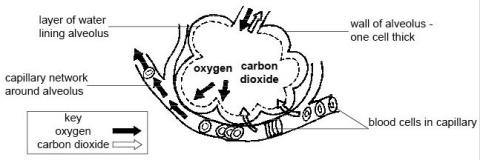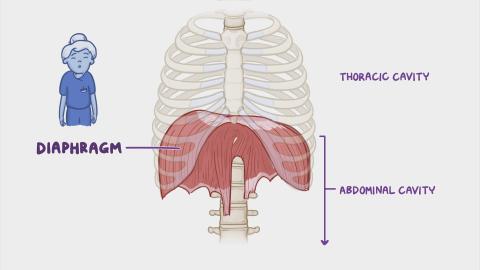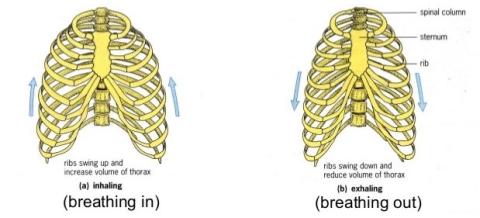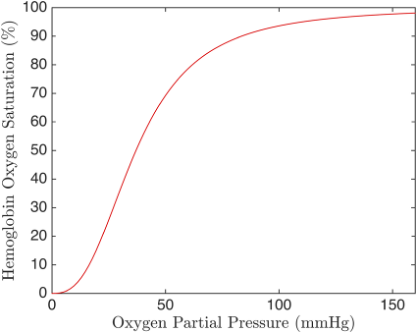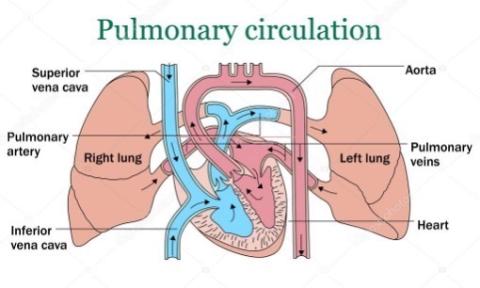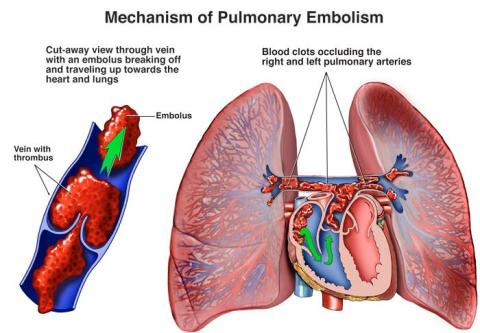The Phenomenal Lung
Introduction
The question presents itself: why do we need to breathe? We are well aware that breathing comes easily to each of us, both awake and asleep! Of course, there is a sudden alarm when we can’t breathe, as our life depends on it. Why is that?
Our body is a highly complicated machine that requires a considerable amount of energy to maintain and repair itself. We need energy to conduct daily activities such as walking, talking, thinking, climbing, sitting, and breathing. Where does this energy come from?
To provide energy for all our daily life, our bodies burn sugar (in the form of glucose) with oxygen. This reaction results in the formation of both carbon dioxide and water, given off as waste products. The breakdown of one glucose molecule leads to a net gain of 38 molecules of ATP (adenosine triphosphate). ATP is the basic unit of energy which fuels the metabolic processes in our cells. ATP is the “gasoline that runs the engine.” This chemical reaction takes place within the mitochondria of our cells. This process is called cellular respiration, and its chemical equation is:
C6H12O6 (glucose) + 6 O2 → 6 CO2 + 6 H2O 1
Glucose (on the left side of the equation) is derived from our daily food intake. The digestive system along with the liver oversee the processing of food to produce glucose. Excess water (on the right side of the equation) is eliminated by the kidney. Oxygen uptake and carbon dioxide discharge represent two critical functions of our lungs. Both the insufficient uptake of oxygen into our body and the insufficient release of carbon dioxide from our body are fatal. The lungs oversee the efficient completion of both functions. We will explore how this happens.
Anatomy
The lung serves as the interface where circulating blood accepts oxygen from the atmosphere and where carbon dioxide is released. Blood cells contain hemoglobin which is a specifically designed protein that can carry oxygen in high concentrations to the body. This exchange requires a large surface area between blood and air so that each individual blood cell can be exposed to oxygen. Carbon dioxide that is produced as a waste product of cellular respiration is readily discharged by blood and is eliminated when we exhale each breath. The lung is specifically designed to accomplish both the uptake of oxygen and the release of carbon dioxide at a microscopic level. The anatomy of the lung is brilliantly designed to accomplish this task.
The lungs are situated in the chest cavity. The lungs are subdivided into three lobes on the right side and two on the left. Air is conducted to all parts of the lungs via branching segments called bronchioles. The bronchioles branch much like a tree with progressively smaller branches. The actual gas exchange is accomplished in microscopic sacs called alveoli (Fig. 1). The human lungs contain approximately 300 million alveoli. These tiny but numerous sacs provide a surface area about the size of a tennis court to allow optimal gas exchange. We breath about 5,000 gallons of air daily. 2
Respiratory Mechanism
Air is taken into the lungs primarily as a function of the diaphragm. The diaphragm is a large umbrella shaped muscle that contracts to draw air into the lungs and relaxes to expel air from the lungs. The rising and falling of our ribs also support this activity. With vigorous physical activity such as running, we use both the diaphragm and the ribs maximally (Figs. 2, 3).
Oxygen Uptake by Blood
Blood cells are extremely efficient at absorbing oxygen present in the lung. About 98% of the oxygen carried in blood is by the hemoglobin content in the individual blood cells, and only 2% is carried dissolved in the adjacent fluid (plasma). The exchange of oxygen is effectively completed with the oxygen level of 21% in the atmosphere. The partial pressure of oxygen in alveolar air is about 100 mm Hg. Blood is essentially completely saturated with oxygen at that level (Fig. 4). 3
The oxygen uptake of hemoglobin increases as the oxygen availability increases. However, one can visualize that only a scant amount of “extra oxygen” is absorbed once the oxygen partial pressure is above 80 mm Hg. (The partial pressure of oxygen in the atmosphere is 160 mm Hg
and the partial pressure of oxygen in the alveoli is about 100 mm Hg). Increasing our inspired oxygen above the 21% present in the atmosphere adds little to the oxygen carried by blood. For example, the football player that breathes in pure oxygen after an exhausting run actually receives little benefit from his oxygen tank. His hemoglobin is already well saturated with oxygen at much lower concentrations of inspired oxygen. Our lungs are tuned specifically to operate best at the level of oxygen present in the atmosphere (21%).
Circulation of Blood Through the Lung
The oxygen-poor blood (blue color) from the body enters the lung via the right heart and pulmonary artery. The oxygen-rich blood (red color) returns to the left heart and is distributed to the body via the aorta (Fig. 5). Thus, the heart pumps blood both into and out of the lungs. The distribution of the blood vessels in the lungs exactly matches the distribution of the airway bronchioles, extending even down to the individual alveoli. Thus, every microscopic alveolus has its own tiny segments of blood vessels to oxygenate.
Self-Cleaning Function of the Lung
The air that we breath has contaminants like dust, sand, pollen, dander, bacteria, etc. These contaminants can quickly accumulate in the lung like dust on a piece of furniture. The lung has a self-cleaning mechanism called ciliated cells. The cells which line the airways have a microscopic brush-like border which sweeps contaminants out of the lung. Some of the cells secrete a mucous which protects the airway. Other cells also secrete antibiotic proteins and nitrous oxide (NO) which kill bacteria directly. This combination keeps the lung a sterile environment free of debris and infection (Fig. 6 4 ).
The Lung as a Filtering Mechanism
The lungs also serve as a major filtering mechanism to remove any particulate material from the blood before it enters the arterial circulation. This is extremely important as even small particles that reach the brain can cause a stroke or blindness, and debris traveling to the coronary arteries can cause a heart attack. In humans, there is also a danger of clots forming in the veins of the lower extremities. If the clots break free and enter the venous system, they are trapped in the lung (pulmonary emboli) rather than entering the arterial system. The lung protects us from arterial emboli which can be fatal (Fig. 7 5 ).
Summary
The lung accomplishes many functions reliably for our entire life. Outside factors such as smoking, asbestos, coal dust, smog, and other such harmful agents impede the normal functioning of the lung and are best avoided. The lung is a well-designed system that not only functions dependably, but also is capable of repairing itself. From our first breath as an infant, to our final breath here on earth, we can thank our Creator God for our finely tuned lungs.
Breathing is mentioned in the book of Job more than any other book of the Bible.
Job 7:7 Remember, O God, that my life is but a breath. 6
Job 12:10 In His hand is the life of every creature and the breath of all mankind.
Job 33:4 The Spirit of God has made me: the breath of the Almighty gives me life.
God Himself comments on the gift of breathing.
Genesis 2:7 Then the Lord God formed a man from the dust of the ground and breathed into his nostrils the breath of life.
The word of God reveals that He is the author of our breathing and our life. We can be thankful to Him for His careful design that accomplishes His will. The very breath in our lungs allows us to sing His praises!
- 1Patel S, Miao JH, Yetiskul E, Anokhin A, Majmundar SH (2022 Dec 26) Physiology, carbon dioxide retention. StatPearls. https://www.ncbi.nlm.nih.gov/books/NBK482456/ Accessed 2024 Feb 02
- 2Dalley A (2019 Mar 01) Your lungs are really amazing. An anatomy professor explains why. The Conversation. https://theconversation.com/your-lungs-are-reallyamazing-an-anatomy-professor-explains-why-106669 Accessed 2024 Feb 01
- 3https://www.researchgate.net/figure/Hemoglobin-Binding-Curve-Hemoglobin-oxygen-saturation-as-a-function-of-partial-pressure_fig10_309876232 Accessed 2024 Feb 02
- 4https://www.researchgate.net/figure/Mechanisms-of-upper-airway-innate-immunity-Ciliated-epithelial-andgoblet-cells-work-in_fig2_313831059 Accessed 2024 Feb 01
- 5https://www.rwjbh.org/treatment-care/heart-and-vascular-care/diseases-conditions/pulmonary-embolism/ Accessed 2024 Feb 01
- 6Scriptures are taken from: Holy Bible, New International Version®, NIV® Copyright ©1973, 1978, 1984, 2011 by Biblica, Inc.®
